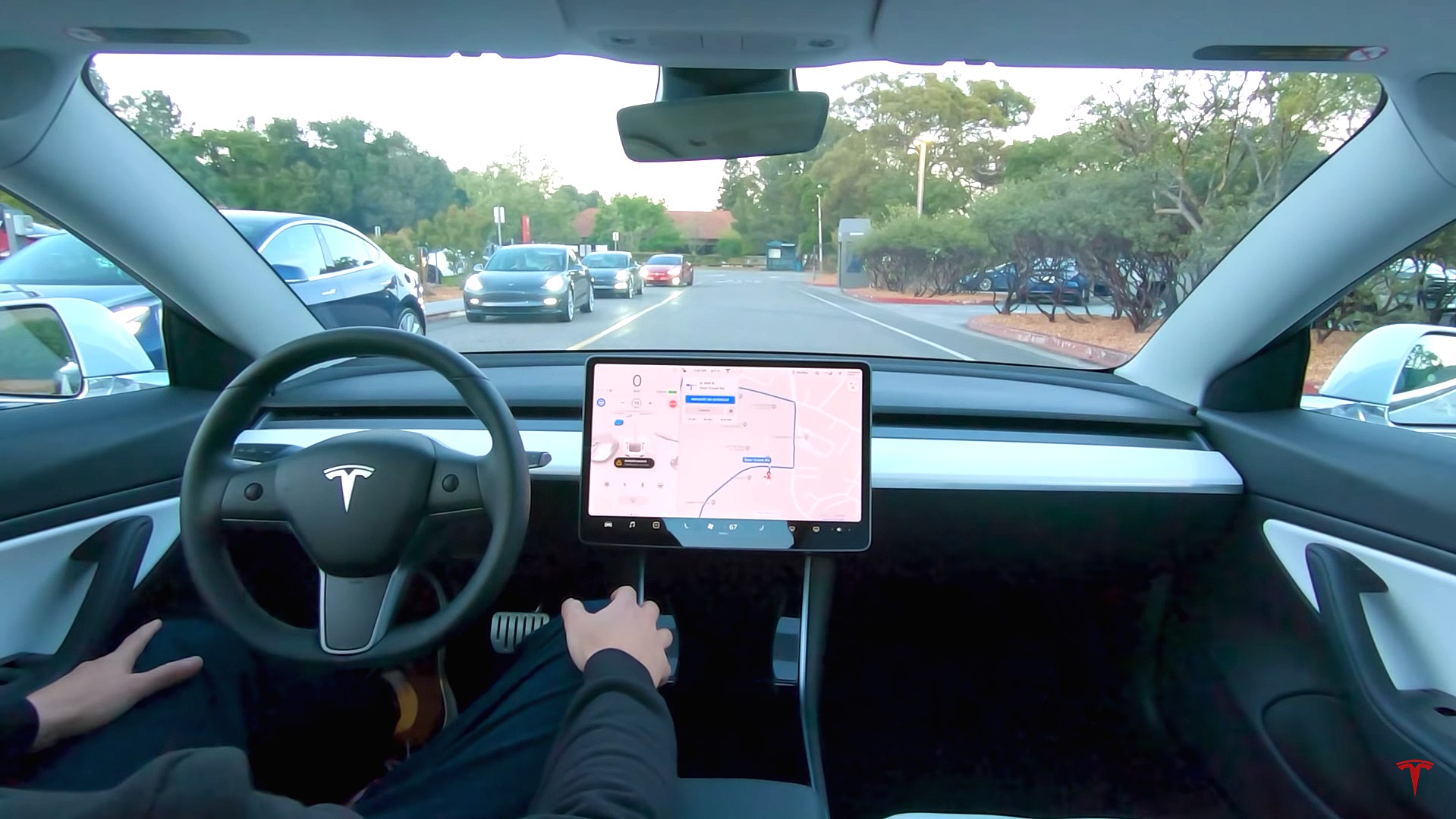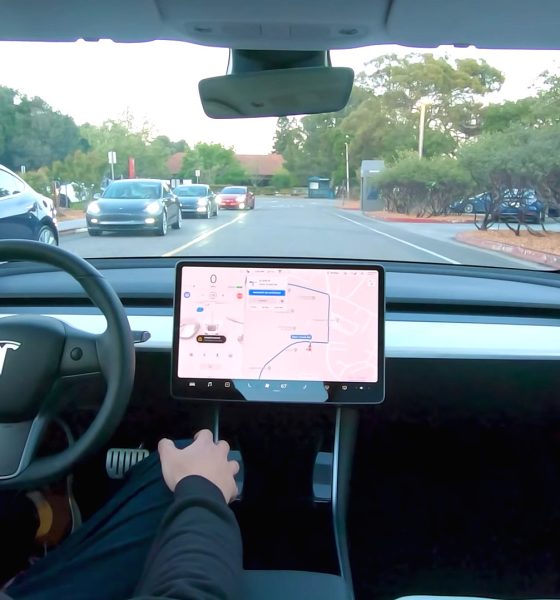

News
Tesla says its Full Self-Driving subscription is coming ‘in a month or two’
Tesla’s Full Self-Driving subscription program is coming “in a month or two,” CEO Elon Musk confirmed during the company’s Q4 2020 Earnings Call.
Full Self-Driving is Tesla’s current infrastructure for semi-autonomous driving. The company holds a reputation for having one of the most robust, intricate, complex, and accurate driver assistance programs in the automotive industry. For $10,000, Tesla owners can give their vehicle the ability to drive on highways, change lanes, Autopark, Summon, Autosteer on City Streets, and, later this year, have full Traffic Light and Stop Sign Control.
While Tesla maintains the FSD suite’s value is significantly higher than its current price due to its complexity and its relation to the future rollout of the Robotaxi fleet, the $10,000 price tag is too much for some to consider. Therefore, Tesla has pondered the possibility of an FSD Subscription instead.
Musk indicates that the subscription will come “in a month or two,” meaning that Tesla owners will be able to subscribe to the semi-autonomous driving functionality by the end of Q1 2021 if all goes according to plan.
Musk hinted at the possibility in late 2020 when he stated the subscription would begin “early next year.”
Absolutely. We will release FSD subscription early next year.
— Elon Musk (@elonmusk) December 20, 2020
The prospect of an FSD subscription has been in the works for nearly a year. In April 2020, Tesla hacker green found source code in his vehicle that indicated the electric automaker was preparing for an imminent rollout of the FSD subscription service. This ultimately never happened in 2020, but it is clear that Tesla has been thinking about it for some time.
After the source code was found by green, Tesla held its Q1 2020 Earnings Call just two days later. This resulted in CEO Elon Musk and CFO Zachary Kirkhorn’s introduction of a subscription program by the end of 2020.
there’s code for pay as you go subscription plan, has been for quite a while. Waiting for that eventual time when it will make sense I am sure 😉
— green (@greentheonly) April 28, 2020
At the time, the FSD suite was $7,000, $3,000 less than the suite’s current price. Ultimately, Tesla dealt with bigger problems in 2020, like figuring out manufacturing bottlenecks, securing land for a new production plant, and working on several vehicle updates that have revamped the look of the Model 3, Model S, and Model X. Battling the COVID-19 pandemic and supply constraints with battery cells also were two other items on Tesla’s plate.
Musk confirms that it will be a smarter financial decision to purchase Tesla’s FSD suite outright, but the company considered that some consumers might want to pay-as-they-go. Ultimately, the subscription plan has its validity, as owners have waited several months for more developments on when the FSD pay-as-you-go service would be activated.

News
Tesla FSD fleet is nearing 7 billion total miles, including 2.5 billion city miles
As can be seen on Tesla’s official FSD webpage, vehicles equipped with the system have now navigated over 6.99 billion miles.

Tesla’s Full Self-Driving (Supervised) fleet is closing in on almost 7 billion total miles driven, as per data posted by the company on its official FSD webpage.
These figures hint at the massive scale of data fueling Tesla’s rapid FSD improvements, which have been quite notable as of late.
FSD mileage milestones
As can be seen on Tesla’s official FSD webpage, vehicles equipped with the system have now navigated over 6.99 billion miles. Tesla owner and avid FSD tester Whole Mars Catalog also shared a screenshot indicating that from the nearly 7 billion miles traveled by the FSD fleet, more than 2.5 billion miles were driven inside cities.
City miles are particularly valuable for complex urban scenarios like unprotected turns, pedestrian interactions, and traffic lights. This is also the difference-maker for FSD, as only complex solutions, such as Waymo’s self-driving taxis, operate similarly on inner-city streets. And even then, incidents such as the San Francisco blackouts have proven challenging for sensor-rich vehicles like Waymos.
Tesla’s data edge
Tesla has a number of advantages in the autonomous vehicle sector, one of which is the size of its fleet and the number of vehicles training FSD on real-world roads. Tesla’s nearly 7 billion FSD miles then allow the company to roll out updates that make its vehicles behave like they are being driven by experienced drivers, even if they are operating on their own.
So notable are Tesla’s improvements to FSD that NVIDIA Director of Robotics Jim Fan, after experiencing FSD v14, noted that the system is the first AI that passes what he described as a “Physical Turing Test.”
“Despite knowing exactly how robot learning works, I still find it magical watching the steering wheel turn by itself. First it feels surreal, next it becomes routine. Then, like the smartphone, taking it away actively hurts. This is how humanity gets rewired and glued to god-like technologies,” Fan wrote in a post on X.
News
Tesla starts showing how FSD will change lives in Europe
Local officials tested the system on narrow country roads and were impressed by FSD’s smooth, human-like driving, with some calling the service a game-changer for everyday life in areas that are far from urban centers.

Tesla has launched Europe’s first public shuttle service using Full Self-Driving (Supervised) in the rural Eifelkreis Bitburg-Prüm region of Germany, demonstrating how the technology can restore independence and mobility for people who struggle with limited transport options.
Local officials tested the system on narrow country roads and were impressed by FSD’s smooth, human-like driving, with some calling the service a game-changer for everyday life in areas that are far from urban centers.
Officials see real impact on rural residents
Arzfeld Mayor Johannes Kuhl and District Administrator Andreas Kruppert personally tested the Tesla shuttle service. This allowed them to see just how well FSD navigated winding lanes and rural roads confidently. Kruppert said, “Autonomous driving sounds like science fiction to many, but we simply see here that it works totally well in rural regions too.” Kuhl, for his part, also noted that FSD “feels like a very experienced driver.”
The pilot complements the area’s “Citizen Bus” program, which provides on-demand rides for elderly residents who can no longer drive themselves. Tesla Europe shared a video of a demonstration of the service, highlighting how FSD gives people their freedom back, even in places where public transport is not as prevalent.
What the Ministry for Economic Affairs and Transport says
Rhineland-Palatinate’s Minister Daniela Schmitt supported the project, praising the collaboration that made this “first of its kind in Europe” possible. As per the ministry, the rural rollout for the service shows FSD’s potential beyond major cities, and it delivers tangible benefits like grocery runs, doctor visits, and social connections for isolated residents.
“Reliable and flexible mobility is especially vital in rural areas. With the launch of a shuttle service using self-driving vehicles (FSD supervised) by Tesla in the Eifelkreis Bitburg-Prüm, an innovative pilot project is now getting underway that complements local community bus services. It is the first project of its kind in Europe.
“The result is a real gain for rural mobility: greater accessibility, more flexibility and tangible benefits for everyday life. A strong signal for innovation, cooperation and future-oriented mobility beyond urban centers,” the ministry wrote in a LinkedIn post.
News
Tesla China quietly posts Robotaxi-related job listing
Tesla China is currently seeking a Low Voltage Electrical Engineer to work on circuit board design for the company’s autonomous vehicles.

Tesla has posted a new job listing in Shanghai explicitly tied to its Robotaxi program, fueling speculation that the company is preparing to launch its dedicated autonomous ride-hailing service in China.
As noted in the listing, Tesla China is currently seeking a Low Voltage Electrical Engineer to work on circuit board design for the company’s autonomous vehicles.
Robotaxi-specific role
The listing, which was shared on social media platform X by industry watcher @tslaming, suggested that Tesla China is looking to fill the role urgently. The job listing itself specifically mentions that the person hired for the role will be working on the Low Voltage Hardware team, which would design the circuit boards that would serve as the nervous system of the Robotaxi.
Key tasks for the role, as indicated in the job listing, include collaboration with PCB layout, firmware, mechanical, program management, and validation teams, among other responsibilities. The role is based in Shanghai.
China Robotaxi launch
China represents a massive potential market for robotaxis, with its dense urban centers and supportive policies in select cities. Tesla has limited permission to roll out FSD in the country, though despite this, its vehicles have been hailed as among the best in the market when it comes to autonomous features. So far, at least, it appears that China supports Tesla’s FSD and Robotaxi rollout.
This was hinted at in November, when Tesla brought the Cybercab to the 8th China International Import Expo (CIIE) in Shanghai, marking the first time that the autonomous two-seater was brought to the Asia-Pacific region. The vehicle, despite not having a release date in China, received a significant amount of interest among the event’s attendees.








